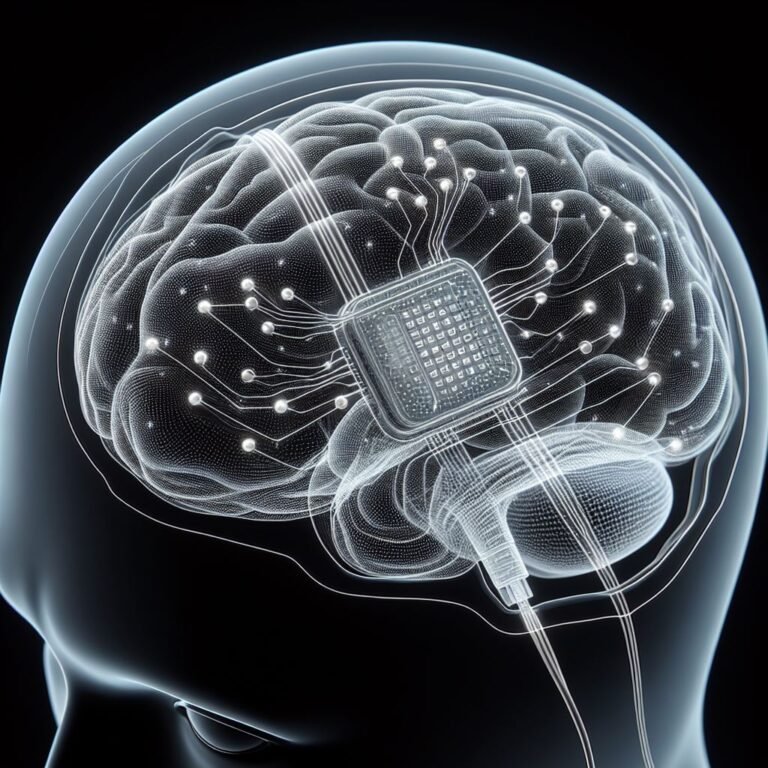Synchron: A Revolutionary Breakthrough in Neural Interface Technology
Initial Concept: Paving the Way for a New Era
In the world of neuroscience and medical technology, one name stands out: Synchron. With its groundbreaking neural interface technology, Synchron has revolutionized the field and opened up new possibilities for patients suffering from neurological disorders.

Synchron is a neurotechnology company founded in 2016 by Thomas Oxley, Cameron Gratton, and Peter Yoo. The company is developing a brain-computer interface (BCI) system called the Stentrode, which is designed to be implanted in the brain through a minimally invasive procedure.
The initial concept of Synchron was born out of a desire to bridge the gap between the human brain and technology. The team of brilliant scientists and engineers behind Synchron envisioned a future where individuals with paralysis or other neurological conditions could regain control over their bodies through a direct connection to their brain.
The initial concept for the Stentrode came to Oxley in 2012, while he was working as a neurosurgeon in Australia. Oxley had a patient who was paralyzed from the neck down, and he wanted to find a way to help him communicate and regain some control of his body.
Oxley realized that he could use a stent, which is a small mesh tube, to deliver electrodes into the brain. The stent could then be used to record brain activity and transmit it to an external device.
Years of Research and Achievements
Over the years, Synchron has dedicated extensive resources to research and development, pushing the boundaries of what was once thought impossible. Countless hours have been spent in laboratories, analyzing data, and refining the technology.
Synchron has made significant progress in developing the Stentrode over the past few years. In 2019, the company implanted the Stentrode in a sheep for the first time. The device was able to successfully record the sheep’s brain activity and transmit it to a computer.
In 2020, Synchron implanted the Stentrode in a pig. The device allowed the pig to move a cursor on a computer screen using its thoughts.
Synchron has also made progress in developing software that can decode brain signals and translate them into commands that can be used to control external devices. In 2021, the company announced that it had developed a software algorithm that can decode brain signals in real time. This means that users could potentially control external devices with their thoughts without any lag.
Through rigorous testing and continuous innovation, Synchron has achieved numerous milestones. The team has successfully developed a neural interface device that can be implanted in the brain, allowing for bidirectional communication between the brain and external devices.
Testing on Animals: Ethical Considerations
Before any human trials could take place, Synchron conducted extensive testing on animals. This step was crucial to ensure the safety and efficacy of the technology. The team worked closely with ethical committees and followed strict guidelines to minimize any potential harm to the animals involved.
Synchron has conducted a number of experiments on animals to test the Stentrode. In 2019, the company implanted the Stentrode in a sheep for the first time. The device was able to successfully record the sheep’s brain activity and transmit it to a computer.
In 2020, Synchron implanted the Stentrode in a pig. The device allowed the pig to move a cursor on a computer screen using its thoughts.
Synchron has also conducted experiments on rats and mice. These experiments have shown that the Stentrode can be used to restore lost function in animals with spinal cord injuries.
Animal testing played a vital role in refining the neural interface technology and understanding its impact on the brain. The insights gained from these experiments paved the way for the next phase of Synchron’s journey.
FDA Approval: A Testament to Safety and Effectiveness
After years of research and testing, Synchron received approval from the U.S. Food and Drug Administration (FDA) to proceed with human trials. This milestone was a testament to the safety and effectiveness of the neural interface technology developed by Synchron.
The FDA’s rigorous evaluation process ensures that any medical technology reaching the market meets the highest standards of safety and efficacy. Synchron’s achievement of FDA approval is a significant validation of its groundbreaking work.
Approaching Human Testing: Restoring Hope
With FDA approval secured, Synchron is now on the verge of conducting human trials. These trials will involve individuals with paralysis, offering them the hope of regaining control over their bodies and improving their quality of life.
The human testing phase will involve implanting the neural interface device developed by Synchron into the brains of selected participants. Through this direct connection to the brain, the individuals will have the opportunity to control external devices and potentially regain lost motor functions.
The company is currently recruiting participants for its clinical trial.
What Does Synchron Offer to Humans?
Synchron’s neural interface technology offers a range of potential benefits to humans. For individuals with paralysis, it holds the promise of restoring mobility and independence. Tasks that were once impossible may become achievable through the power of the mind.
The Stentrode has the potential to transform the lives of people with paralysis and other neurological disorders. The device could allow users to control external devices with their thoughts, communicate telepathically, and even regain some control of their bodies.
Here are some specific examples of what the Stentrode could offer to humans:
- People with paralysis could regain control of their limbs and move around independently.
- People with speech impairments could communicate telepathically.
- People with blindness could see again.
- People with cognitive impairments could improve their memory and concentration.
- Healthy people could enhance their cognitive abilities and learn new skills more quickly.
Furthermore, Synchron’s technology has the potential to revolutionize the treatment of neurological disorders such as Parkinson’s disease, epilepsy, and even mental health conditions. By directly interfacing with the brain, it opens up new avenues for targeted therapies and personalized treatment approaches.
Conclusions: A Glimpse into the Future
Synchron’s journey from the initial concept to the verge of human testing is a testament to human ingenuity and the power of scientific innovation. The potential impact of this neural interface technology on the lives of individuals with neurological disorders cannot be overstated.
Synchron is a company with the potential to change the world. Its Stentrode system has the potential to revolutionize the way we interact with the world around us and to enhance our cognitive abilities.
However, it is important to note that the Stentrode system is still in its early stages of development. There are a number of challenges that need to be overcome before the system can be safely and effectively used in humans.
One challenge is that the Stentrode system is invasive. The device needs to be implanted in the brain, which is a complex and delicate procedure. There is also the risk of infection and other complications.
Another challenge is that the Stentrode system is expensive to develop and manufacture. This means that it may not be affordable for everyone.
Finally, there are ethical concerns about the use of BCI systems. For example, some people worry that BCI systems could be used to control people’s thoughts and actions.
Despite these challenges, Synchron’s Stentrode system has the potential to revolutionize the way we live and work. It will be interesting to see how the company’s technology develops in the years to come.
As Synchron continues to push the boundaries of what is possible, we eagerly await the results of the upcoming human trials. The future is bright, and with Synchron leading the way, a world where the human brain and technology seamlessly merge is within reach.
If you found this article interesting, please visit our website and browse around for Brain Computer Interface related content.
You can also check out Emotiv’s and Blackrock Neurotech’s reviews







